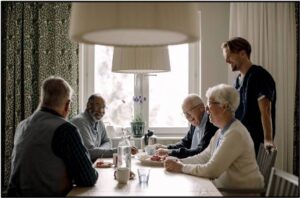April 28, 2025
Judy Faust Hartnett, CNN
Two-thirds of retired Americans wish they had a side gig to support their ideal retirement lifestyle and 93% of those retired that have gig jobs, work because they enjoy it. Americans will be living longer in coming years, but they may not necessarily be working longer to earn income for those additional years of living. That’s one of the takeaways from a financial resilience and longevity report from John Hancock Retirement that draws on its U.S. retirement plan participants and a separate panel of retirees.

According to the study, 62% of retirees surveyed left the workforce sooner than expected, both shortening their time to save in a workplace plan and extending their financial needs in retirement. Many retired Americans find themselves struggling to support the retirement lifestyle they once envisioned. According to a survey by financial services firm D.A. Davidson & Co., 41% of retirees say they currently can’t afford their ideal retirement.
Of those who work side jobs because of financial reasons, 20% turned to part-time work or side gigs to pay off existing debts, and 17% wanted to financially support their ideal retirement lifestyle. Their financial shortfall can be attributed to factors such as inadequate planning for the financial realities of retirement. As a result, many are rethinking what retirement looks like, with some turning to side gigs to fill the financial gap.
Yet, the number one reason D.A. Davidson survey respondents said they took on a side gig in retirement is that staying lightly employed doesn’t have to be a burden. Ninety-three percent of retirees with a side gig say they enjoy it. Beyond enjoyment, over half (55%) say they chose their gig to stay mentally or socially engaged, showing that for many, it’s about more than just extra income – it’s about fulfillment.
“The definition of – and classic timeline for – retirement is changing,” said Andrew Crowell, financial advisor and vice chairman of wealth management at D.A. Davidson. “While many retirees might picture never working again, a side gig in retirement can be a fun and meaningful way to stay engaged in the community while supporting a more ideal retirement overall.”








